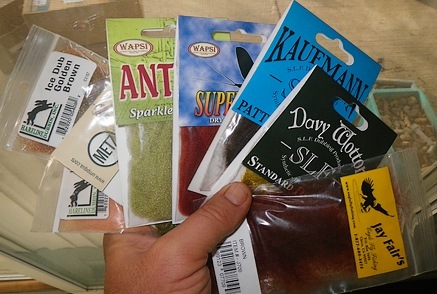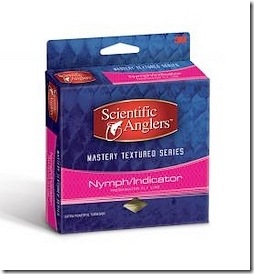 I fancy myself a textured line expert, only because I’ve whined louder and longer than anyone else…
I fancy myself a textured line expert, only because I’ve whined louder and longer than anyone else…
I’ve been addicted to the sound of fingernails on shower curtain since owning my first Masterline.
I’ve lost more flesh and fingertips to the Sharkskin than I care to remember, and as I’ve learned little from that hellish torture, I spent all weekend flinging a “golf dimpled” Scientific Anglers Mastery textured line at everything that moved and most things that didn’t …
Textured fly lines have always been the bastard stepchild of fly fishing. Manufacturers seem gun-shy of the technology because each time someone has the temerity to release one it’s accused of numerous ills of which it’s blameless.
… and so few have been released over the last couple of decades that they’re always claimed to be revolutionary – despite silk and horse hair lines having an obvious woven texture for a couple hundred years, compared to the plastic polymers we’ve used for a short half-century.
The Masterline Chalkstream was the first textured line I remember; launched in the 1980’s, it was rumored to be made by the Sunset Line & Twine folks for the European market, available under the Masterline “Chalkstream” label in the UK, and the Hal Janssen label here in the US.
The Sharkskin series offered by Scientific Anglers is of recent manufacture, and while it’s a fine casting line, earned a reputation as a surefire fingertip removal method, and unpleasant memorable to fish without finger protection.
The Ridge line is a similar idea with a bit of a twist, only because its texture runs parallel with the line to accomplish similar function, instead of a cross-grained pattern like the other vendor’s products.
While the physics of texture are sound, Scientific Anglers may have opted to release this less abrasive flavor in light of some painful Sharkskin feedback. Manufacturers rarely cede ground on their brainchildren and give every conceivable rationale to the contrary, yet this newest flavor is completely delightful, easy to cast and appears to leave both fingers and fingertips intact.
Masterline boasted of “glass bubbles” imbedded in the finish that made the texture lumpy. Sharkskin claimed it was the “ridges and valleys” or a lotus based facsimile, and the Mastery textured line smoothes the harsh edges and lays claim to a model based around a golf ball’s dimples.
The forums will soon be ablaze with claims that “I seen this guy, that knows this other guy, who claims his guides was sawn clean through ..”
If you have old bamboo rods whose guides are not hard chrome, you may have reason for concern. As 99% of the rods made in the last couple of decades are ceramic strippers and hard chrome snakes, there is no known wear issues with any of the textured products. I had a stealthy set of Japanned black snake guides that a Masterline ate about 30% of over the course of two seasons, but traditional chrome is quite hard, and impervious to a flexible textured surface.
The Snakeskin ate fingers, fingertips, and anything else it touched and persisting this myth, producing much heat on the subject in the Internet forums, but Scientific Angler was very much aware of the fingers issue and recommended the use of some type of protection even at product launch.
I didn’t see the necessity to add more gear just to fish a fly line, abandoning the Sharkskin shortly after a 15 pound carp took advantage of sand sticking to the line to carve a bloody track across four of my fingers …
It appears this new textured Mastery variant learned from the Sharkskin’s excesses and sports a finish less abrasive, a bit less noisy, and provides a great replacement for all those that admired the old Masterline and its casting qualities.
Note: It still goes “wheet, wheet” when you double haul, so if you’re made of sugar and can’t handle the noise, nothing’s changed here. Sirens still echo through the brownline as do the gunshots and howl of two-stroke off road crazies, “wheet, wheet” is relaxing by comparison.

There is little doubt we’ll hear about fancy polymers and painstaking research, be force-fed formulas with “X’s” and exponents, which allows children to shoot an entire fly line with a single false cast. But that’s the traditional hype, for those interested in how texture can improve their fishing, or is worth the $79.95 cost, the explanation of what you may experience is quite simple.
Bubbles, Ridges, Valleys, and Dimples all cause the line to come out of the guides like a fast moving powerboat running perpendicular to waves. Both boat and fly line will touch the guides only at the bulges – allowing the valley of the line to pass without incurring friction at all. Less friction means an extra five, eight, or ten feet in your cast when released.
Extra distance is always useful, especially in lake fishing when you can use it to cover additional water.
Extra distance is not a textured line’s best quality however. The real value is fishing the downstream dry fly – either seated in a boat or wading.
Most guided trips with a boat feature a guide yelling in your ear to flip slack and avoid waking the fly. The guide is leaning over your ear yelling, “ …flip, flip, flip … set the %$# hook!”
That lessened resistance to line exiting the guides means feeding line to the current requires less effort even compared to smooth line, and a tiny flip of the wrist will add three feet of slack giving your fly precious extra seconds to cover water without drag.
That is what your money bought you, and why you may prefer it to any smooth fly line.
Over the coming months we’ll continue to be inundated with all the vendor techno babble; claims of cackling fellows in stained lab coats wearing thick spectacles, who’ve spent their entire lives researching polymers that rival a woman’s skin, repel water, and cast themselves.
Occasionally some of that will be true.
Remember that exponents and polymers cannot impart the correct motion to a fly rod, only you can do that – and the results you’ll see will vary based on conditions and skill.
Specifically I purchased a Mastery Textured Nymph Tip in WF7F. It replaces my old Cortland Nymph Tip WF7F that I use in the brown water, which is a far harsher environment than a relatively clean trout creek.
The Sharkskin line had been tested under similar conditions, and I noticed a lot of color fade, likely due to unknown farm chemicals and effluent.
The texture supplied on the line is misleading. It’s small and unobtrusive almost like a matte finish, not the obvious embossing of the older Sharkskin. Only running a fingernail down the line reveals the subtle “tic-tic-tic” of the texture, and promises to be much less abrasive on the initial feel alone.
It possesses a short and very clean color demark or transition than other bi-color combinations I’ve owned. The body of the fly line appears off-white with a tinge of cold, and the two foot orange section of the nymph tip clashes cold color with a warm – making the transition stark and quite easy to watch for a subtle move.
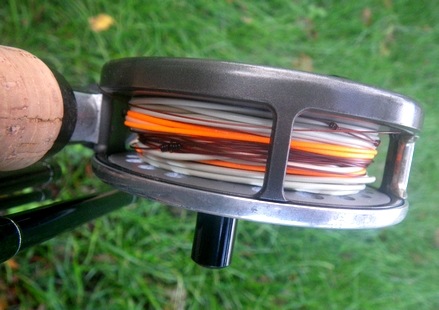
Many of the other vendors persist the traditional peach running line with the orange head, which is a bit less distinct, as both colors are warm.
I liked the new line marking system destined for the balance of the Scientific Anglers stable, a fine vertical print of line weight and taper printed on the head portion – far enough back so that if you modified the taper by trimming sections from the front, the label will still be available.
The WF front taper was both responsive and authoritative to cast on a fast action graphite rod. I spent much of the weekend flinging the long cast to see how much floating slack it would yank off the water’s surface, and how it felt to strip all that back over the same index finger.
I mashed the running line into the sand at the water’s edge and repeated the process with much longer strips, and faster speeds, and didn’t feel the tell-tale warmth of a line burn.
To wit, I don’t think this line will bite quite as badly, and it may be suitable for heavy use without the rigor of tape, bandages, or forced amputation. One weekend isn’t a surefire test by any stretch of the imagination, but I rode this beast hard and it performed admirably without injury.
I’ll continue to use this line throughout the Winter, should it prove harmless, I’ll be replacing some of my other lines as well as laying in a couple spares. I’ll post the outcome after a couple of months, so you can learn from my extended testing in the muck water.
Summary: I think Scientific Angler has struck a nice balance of texture and function with these latest offerings. If you’re a distance craving fisherman, or tired of listening to the guide claim you’ve got reflexes of stone, you may consider giving these lines more than a single glance.
At the list price of $79.95 it’s in the zone of other lines, but given the economic times we’d as soon test the line before purchase (and your shop should be quick to accommodate that request with a rod, reel, and their front lawn).
As with all technologies espousing chemical formulae, we want to see whether the technology provides you an obvious difference – or merely a shoulder shrug.
Full Disclosure: I liked this line before I ever unraveled it from the manufacturer’s box, mostly because I love textured fly lines and think them superior to ANY slick finish. My ardor may not be shared by everyone, so you need to test this line for yourself to ensure your opinion and experiences are similar – before you trust my superlatives to write your check for you.
I purchased this line from FishWest at full retail ($79.95).
 There’s no candy left, or at least none without fingerprints, and you sucked down the Egg Nog without thought to waistline or ill effects.
There’s no candy left, or at least none without fingerprints, and you sucked down the Egg Nog without thought to waistline or ill effects.
 Illinois and California are headed for some out-of-the-box thinking, as both states wrestle with a shortfall representing nearly one quarter of their annual budget.
Illinois and California are headed for some out-of-the-box thinking, as both states wrestle with a shortfall representing nearly one quarter of their annual budget. I was convinced the story behind bead headed flies and their speedy domination of the sport was due to fly tiers who dreaded completing that gracefully tapered head, that final step which revealed their skill set even to the casual observer.
I was convinced the story behind bead headed flies and their speedy domination of the sport was due to fly tiers who dreaded completing that gracefully tapered head, that final step which revealed their skill set even to the casual observer. I’m going to be the unpopular voice suggesting we’re discussing symptoms rather than problems. I’ll be the idiot insisting we’re in a place we shouldn’t be, that we’re arguing elitist snobbery when all the fellow in the white lab coat wants to do is feed the world cheaply.
I’m going to be the unpopular voice suggesting we’re discussing symptoms rather than problems. I’ll be the idiot insisting we’re in a place we shouldn’t be, that we’re arguing elitist snobbery when all the fellow in the white lab coat wants to do is feed the world cheaply.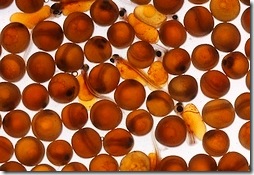 It appears that budget shortfalls and emphasis on belt tightening may have exposed the soft white underbelly of the “put and take” fishery. With both federal and state budgets being carved of fat, and desperate to avoid too deep cuts to the remaining muscle, a combination of license hikes and the systematic redirection of conservation funds may result in a lot less fish for your local creeks.
It appears that budget shortfalls and emphasis on belt tightening may have exposed the soft white underbelly of the “put and take” fishery. With both federal and state budgets being carved of fat, and desperate to avoid too deep cuts to the remaining muscle, a combination of license hikes and the systematic redirection of conservation funds may result in a lot less fish for your local creeks. I fancy myself a textured line expert, only because I’ve whined louder and longer than anyone else…
I fancy myself a textured line expert, only because I’ve whined louder and longer than anyone else…

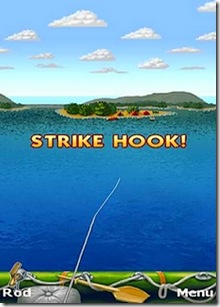 Tom Chandler posted a short Twitter link yesterday that’s
Tom Chandler posted a short Twitter link yesterday that’s  I was surprised to learn that next month’s elections will have four states choosing to
I was surprised to learn that next month’s elections will have four states choosing to 